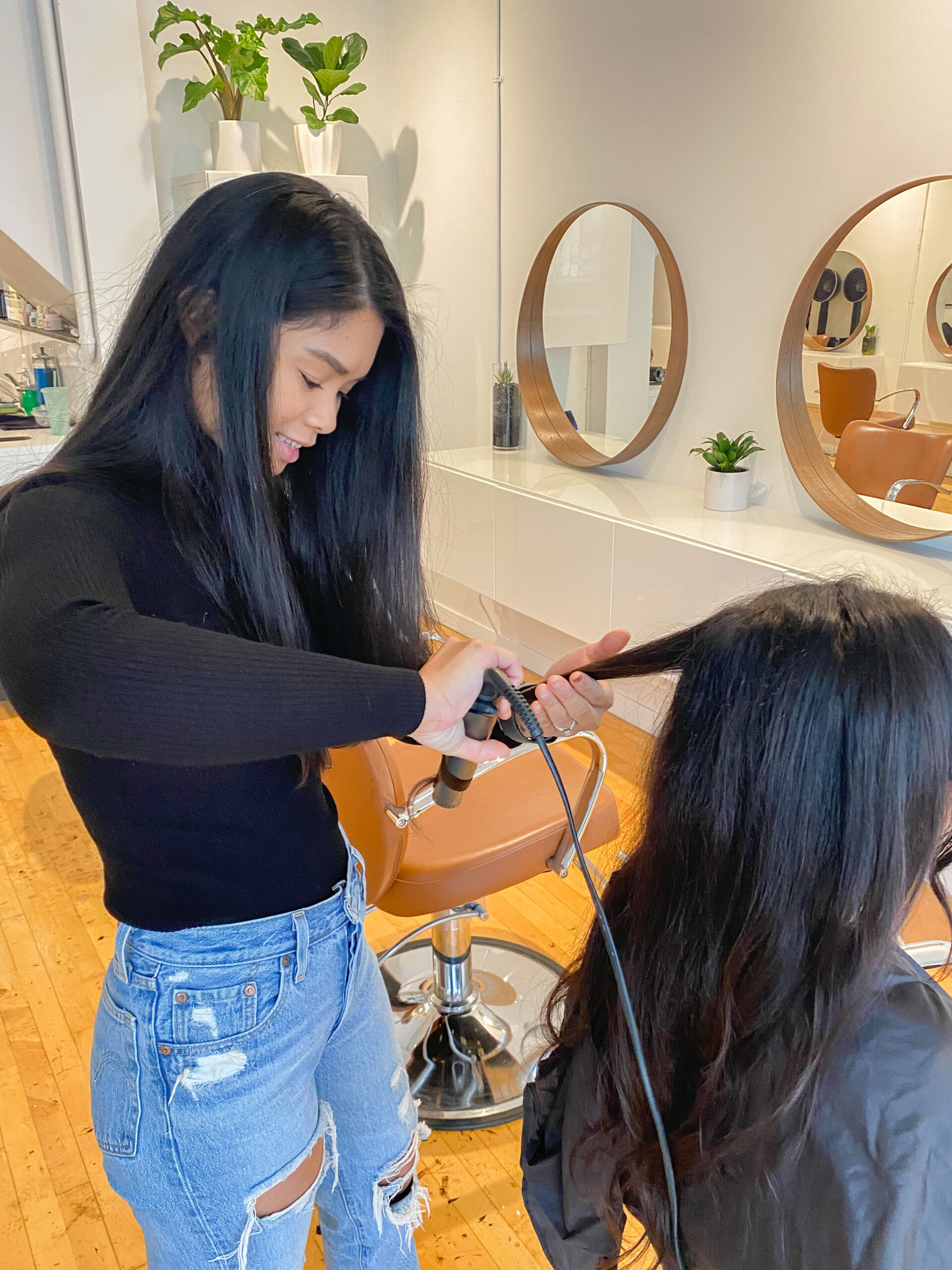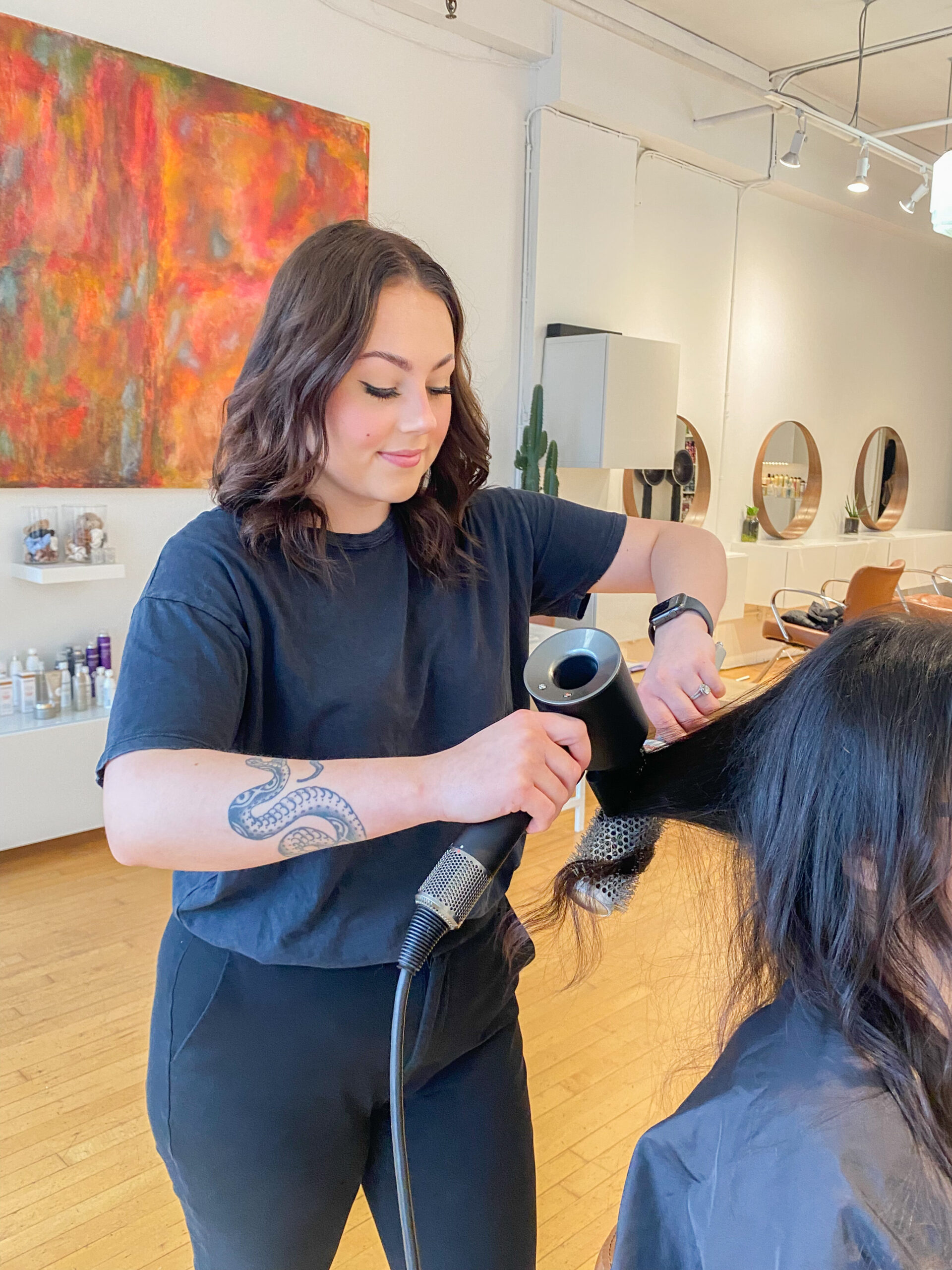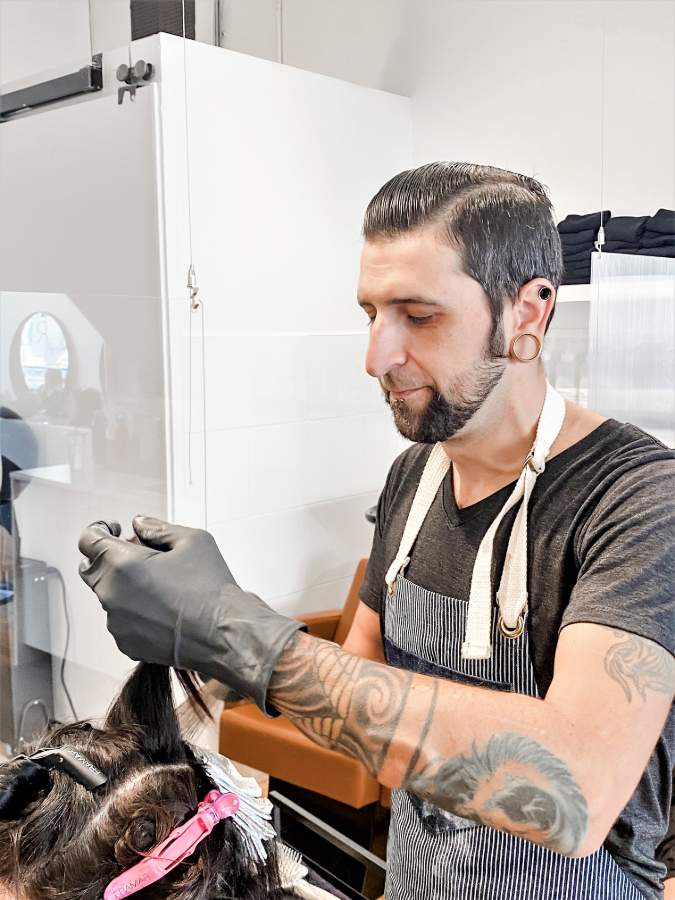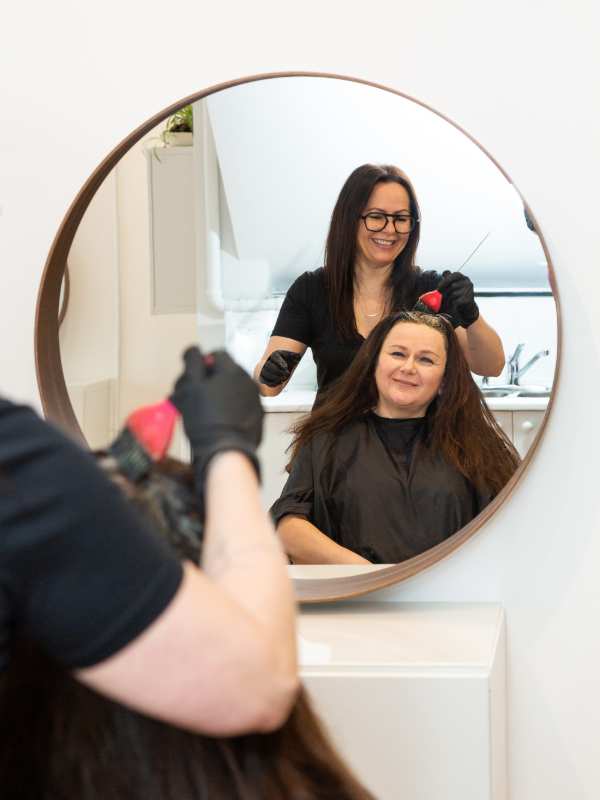Traditional root touch up is done with a professional hair colour that processes from 30 to 45 minutes.
FAQs
What is the difference between professional root
touch up
and express root touch up?
Express root touch up is done with a professional, fast processing hair colour at 10 to 15min processing time.
What is a fast processing hair colour?
It is a new technology called Micro Pigment
Technology.
The hair colour is specially formulated with
high quality, rare pigments in micro sizes and
weights.
There are few colour lines on the market with
this
technology, the one we use is designed and made
in Italy.
Is this technology good for me?
It is actually better then traditional hair
colour because processing time is way
shorter,
it has low ammonia content, it is gentle,
conditioning and it contains Kera-Veg 18.
What is Kera-Veg 18?
It is vegetable based keratin protein complex
that increases hair strength and
elasticity, it adds shine, durability and
longevity to your hair and it
protects from environmental stress factors.
Will the colour cover my stubborn grey hair?
Since we are experts in grey coverage therefore there is no grey hair we can not cover.
Does the colour last?
Yes, the colour will never leave your hair.
There is an allowance of up to one shade of
fading within one or
two weeks, but it will never fade away to see
white hair.
If you start noticing grey hair around your
front hairline after one or two weeks of
your root touch up service, it is your new hair
growing. This is very normal
especially with darker shades as hair grows on
an average half an inch a month.
Why is the same hair colour formula I have been
using all this time all of the sudden not
working anymore?
There could be a few reasons why.
1.Changes in hair texture:
As we age, your hair texture may change. Grey
hair tends to
be coarser and more resistant to colour than
pigmented hair.
The change in the texture can affect how well
the colour adheres to the hair shaft.
2.Decreased Melanin production:
With reduced melanin, the hair may not absorb and retain colour as effectively.
3.Water quality:
The mineral content in water can impact the
performance of hair colour.
Hard water, which contains high levels of
minerals, may interfere
with the colour absorption, leading to uneven
results
4.Health factors:
Certain health conditions or medications can
affect the condition
of your hair and its ability to hold colour.
If you are experiencing this it means it’s time to reformulate your hair colour.
What is a rough dry?
Our express root touch up service is designed to
be fast and affordable therefore
we will roughly blow dry your hair without using
round brush.
Does the hair colour you use contain ammonia?
Yes it does but a very low amount – under
2% – compared to other permanent
hair colours on the market that may contain up
to 4% of ammonia
I have experienced an allergic reaction to hair colour.
Allergic reactions to hair colour are often
associated with certain ingredients
found in the …..products. The primary…. culprits
that can cause allergic reactions include:
1.Paraphenylenediamine (PPD):
It is a common ingredient in many permanent hair
dyes.
Reactions to PPD can range from
mild irritation to more severe symptoms, such
as
redness, itching, swelling, and blistering.
2.Parabens
Those are preservatives commonly used in cosmetics, including hair dyes
3.Ammonia
It is used in hair colour to open a hair cuticle
and allow the colour to penetrate.
While ammonia itself is a strong irritant, it
may not necessarily cause
an allergic reaction in everyone. However, some
individuals with
sensitive skin may experience irritation.
4.Resorcinol
It is another chemical found in hair dyes that
can cause skin irritation in some
individuals.
It is often used in combination with other
chemicals to achieve specific color esults.
5.Toluene-2,5-diamine (TDA):
It is a chemical related to PPD.
Some people turn to natural or organic hair
colour as an alternative.
It is important to keep in mind that those
colors may still contain ingredients that
can cause allergic reactions in some
individuals.
It is important to note that allergic reactions
to hair colour are relatively rare,
and most people can use hair dyes without any
issues. However if you have
a known sensitivity to certain chemicals or have
experienced an allergic
reaction in the past, we highly recommend to
perform a patch test. This involves
applying a small amount of hair dye usually
behind the ear for 24hrs
and waiting to see if any adverse reactions
occur.
Can hair colour cause health risks?
So far there is no scientific evidence that hair colour can cause severe health risks.
If you have specific health concerns or
conditions, experienced an allergic
reaction to hair dye or are pregnant and
breastfeeding, we would highly
recommend consulting with a healthcare
professional before using a hair colour
What causes sudden hair loss?
It can be caused by various factors like:
1.Stressors: surgery or illness
2.Hormonal changes: pregnancy, childbirth, menopause, or thyroid issues
3.Alopecia Areata: autoimmune condition causing patchy hair loss
4.Medications: certain drugs like chemotherapy or blood thinners
5.Nutritional Deficiencies: lack of iron, zinc, vitamin D, or B vitamins
6.Medical Conditions: autoimmune diseases, lupus, diabetes, etc.
7.Infections: scalp infections, such as ringworm
8.Traction Alopecia: resulting from thigh hairstyles for extensions
9.Hairstyling Practices: excessive use of heat, harsh chemicals or tight hairstyles
10.Genetics (Androgenetic Alopecia): hereditary pattern baldness
Why do we get grey hair?
Our body stops producing amino acid called Tyrosine.
Tyrosine is responsible for coloration of pigment – it creates the colour of melanin.
Our body still keeps producing cells which are
delivered to the base of follicle and
then it converts those cells to extra cuticle.
Regular hair has 7 – 10 layers of cuticle.
Grey hair has 14 – 18 layers of cuticle therefore it is harder for the colour to penetrate.


 Express rut bar
Express rut bar





